Food waste is a major problem around the world with serious environmental, financial and cultural implications. Perfectly good food gets lost and wasted throughout every stage of the supply chain, from farm to table.
The food waste facts are sobering: Globally, we throw out 1.3 billion tons of food per year. In the U.S. alone, the U.S. Department of Agriculture (USDA) reports that at least 133 billion pounds of food is thrown away annually — equating to a staggering $161 billion. With nearly half of all fruits, vegetables and seafood getting tossed, food is the No. 1 thing in America’s landfills. Although the numbers can be overwhelming to digest, each of us has the power to change the way we purchase, store, consume and discard food, which can add up to a massive collective impact.
One of the ways that we can work to reduce food waste is through recycling initiatives and programs. Let’s dive into some important stats about food waste recycling.
1. There are numerous food waste recycling methods.
You may hear the term “food waste recycling” and wonder what it means and how it’s done. The gist is that food waste recycling aims to sustainably manage food that would otherwise wind up in landfills by instead converting it into useful materials and products. Although food-scrap recycling programs are still relatively uncommon, they’ve been getting more popular in the U.S. in recent years. One MIT study found that 46 out of 115 midsize cities had active food-scrap recycling programs.
Although they share the common goal of diverting food from landfills, a variety of food waste recycling methods exist, including:
- Sending food to a composting facility.
- At-home composting bins.
- Transporting food scraps to a farm to be processed as animal feed.
- Anaerobic digestion, which is the process of breaking down organic materials into nutrient-rich mixtures that can be used for crop fertilizer, boilers and furnaces, alternative-fuel vehicles and more.
2. Food waste recycling is an easy way to reduce your carbon footprint.
Food waste depletes natural resources such as oil, water and land. In fact, if food waste were its own country, it would be the third-largest emitter of greenhouse gases behind China and the U.S.
In America alone, 21% of our agricultural water usage goes toward producing food that ends up being thrown out. Food waste also adds methane to landfills. Keeping all of this in mind, it’s no surprise that by participating in food waste recycling, each of us can benefit the planet and reduce our carbon footprint.
3. Curbside composting programs result in drastic reductions of landfill waste.
City composting programs have been shown to be effective tools in decreasing landfill waste. For example, San Francisco became the first major U.S. city to mandate composting in 2009, and its Citywide Food Waste Recycling program now diverts about 80% of its waste away from landfills.
There has been an explosion of city composting programs in recent years. U.S. food-scrap programs doubled in size from 2010 to 2017, making great progress in reducing waste in our landfills.
Stay up to date with your city’s recycling options, and if curbside composting isn’t available near you yet, express your interest in participating in such a program with your city.
4. A wide variety of food waste can be composted right in your backyard.
Food scraps and yard waste together make up nearly 30% of what gets thrown away. Many of these materials can instead be composted to create organic mixtures that enrich soil.
Composting isn’t as complicated as you may think. Some things that you can compost include:
- Vegetable and fruit scraps.
- Coffee grounds and filters.
- Eggshells.
- Tea and tea bags.
- Grass clippings.
- Leaves.
- Shredded newspapers.
- Soiled cardboard, such as pizza boxes, ripped into small pieces.
To learn more, check out this article on 147 things you can compost.
5. Food recovery initiatives support local communities and food-insecure people.
Even though so much food gets wasted every day, millions of Americans are food insecure. Food is wasted at every step in the supply chain, and about half of U.S. food waste comes from farms, grocery stores and restaurants. One way to reduce this type of food waste is through food recovery programs.
Food recovery programs divert food from landfills and instead get it into the hands of hungry people. Through Feeding Westchester’s Food Recovery Program, donations are picked up from more than 80 farmers, wholesalers and retailers. Our fleet of eight trucks picks up the food, transports it to our distribution center for sorting and then quickly redistributes the nutritious food — delivering it to hungry people through our 300 programs and partners, such as food pantries, soup kitchens, shelters and day care centers.
Always keep in mind that a bit of effort can go a long way when it comes to reducing the amount of food you send to landfills. Stay informed by checking out these six surprising food waste facts, along with our eight tips for reducing food waste at home, for some ideas.
Make an impact and support Feeding Westchester’s food recovery efforts by donating today.






